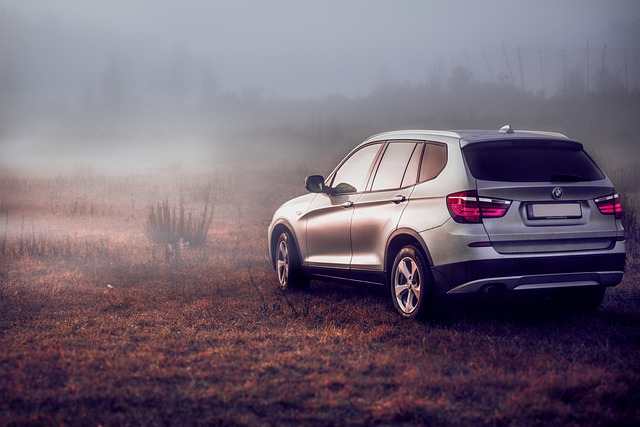Sport Utility Vehicles (SUVs) have evolved from rugged off-road vehicles to versatile family haulers and luxury rides. This article delves into the history, types, features, and market trends of SUVs, highlighting their enduring popularity and diverse appeal in the automotive industry.
Introduction to SUVs
Sport Utility Vehicles, commonly known as SUVs, represent a significant segment of the automotive market characterized by their robust build, higher ground clearance, and versatile capabilities. Initially designed for off-road adventures, SUVs have adapted over time to cater to a wide range of consumer preferences and needs.

Evolution of SUVs
- Early Roots: SUVs trace their origins to military vehicles and rugged off-road predecessors like the Jeep Willys used during World War II. These vehicles were known for their durability and ability to navigate rough terrain.
- Consumer Adoption: In the 1980s and 1990s, SUVs gained popularity among consumers seeking vehicles that combined utility with passenger comfort. Models like the Ford Explorer and Chevrolet Blazer became synonymous with suburban family transportation.
- Segment Diversification: The 2000s saw the diversification of the SUV segment into various categories, including compact SUVs, mid-size SUVs, and full-size SUVs, each catering to different consumer preferences for size, performance, and features.
Types of SUVs
- Compact SUVs: Also known as crossover SUVs, these vehicles combine the features of a traditional SUV with car-like handling and fuel efficiency. Examples include the Honda CR-V, Toyota RAV4, and Ford Escape.
- Mid-Size SUVs: Offering a balance between space, capability, and fuel economy, mid-size SUVs like the Toyota Highlander, Honda Pilot, and Ford Edge are popular choices for families and adventure enthusiasts.
- Full-Size SUVs: Known for their spacious interiors, towing capacity, and often luxury features, full-size SUVs such as the Chevrolet Tahoe, Ford Expedition, and Cadillac Escalade excel in transporting large groups and towing trailers or boats.
- Luxury SUVs: Combining premium materials, advanced technology, and powerful engines, luxury SUVs like the BMW X5, Mercedes-Benz GLE, and Audi Q7 cater to affluent consumers seeking comfort and performance.

Features and Technology
- Advanced Safety Features: Modern SUVs are equipped with advanced safety technologies such as adaptive cruise control, lane departure warning, blind-spot monitoring, and automatic emergency braking to enhance driver and passenger safety.
- Infotainment Systems: Touchscreen interfaces, smartphone integration (Apple CarPlay, Android Auto), premium sound systems, and navigation are standard in many SUVs, offering convenience and entertainment on the road.
- Hybrid and Electric Options: In response to environmental concerns and fuel efficiency demands, hybrid and electric SUVs like the Toyota RAV4 Hybrid, Ford Escape Hybrid, and Tesla Model X are gaining popularity, offering lower emissions and reduced fuel consumption.
Market Trends
- Shift Towards SUVs: SUVs have overtaken traditional sedans in popularity, driven by consumer demand for versatility, higher seating positions, and perceived safety advantages.
- Customization and Personalization: Automakers offer a wide range of trim levels, packages, and customization options for SUVs to appeal to diverse consumer preferences, from rugged off-road capabilities to luxurious interiors.
- Global Market Growth: Emerging markets like China and India are experiencing a surge in SUV demand, influenced by rising disposable incomes and changing consumer preferences for spacious and versatile vehicles.

Considerations for Buyers
- Budget and Financing: Evaluate your budget and consider financing options such as loans or leasing when purchasing an SUV, taking into account initial costs, maintenance, and insurance.
- Usage and Needs: Determine your primary use for the vehicle (commuting, family transport, outdoor adventures) to select the appropriate size, features, and capabilities that meet your lifestyle requirements.
- Resale Value: Research resale values and depreciation rates of different SUV models to make an informed decision that aligns with long-term financial goals.
- Test Drive and Comparison: Test-drive multiple SUVs to assess comfort, driving dynamics, visibility, and features before making a final purchase decision. Compare reviews and ratings from automotive experts and owners.
Conclusion
Sport Utility Vehicles (SUVs) have evolved from their rugged beginnings to become versatile vehicles catering to a diverse range of consumer preferences and needs. With advancements in technology, safety features, and environmental considerations, SUVs continue to dominate the automotive market globally. Understanding the types, features, market trends, and considerations for buying an SUV empowers consumers to make informed decisions that align with their lifestyle and preferences in today&8217;s dynamic automotive landscape.